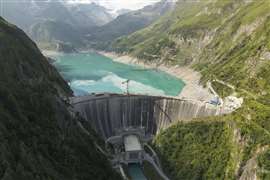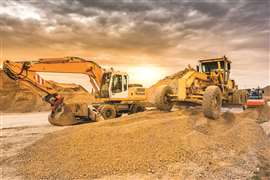Read this article in Français Deutsch Italiano Português Español
Why US construction needs to rethink working at height
26 August 2025
T.J. Lyons, founder of the “Ladders Last” campaign, has built a reputation as one of the most outspoken advocates for construction safety in the US. And he has a simple central message to construction workers: stay on the ground.
Lyons built his profile through roles at Gilbane Building Company and Turner Construction before establishing his consultancy, Lyonetics. His approach centres on aligning safety with programme and productivity rather than relying on rules alone.
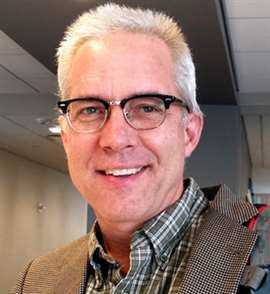 TJ Lyons. (Photo: TJ Lyons)
TJ Lyons. (Photo: TJ Lyons)
“One of the basics I’ve learned in safety is people don’t care about doing things if it’s safer. If you can somehow tie in production schedule or efficiency, they really pay attention. So the intent in what I call my ‘why analytics’ - my approach to safety - is to focus on production schedule efficiency and get safety by default. They don’t know that they’re making their site safer because they’re excited that they’re going to make more money. But it’s kind of a fundamental that capitalism relies on,” he says.
That focus underpins “Ladders Last,” which advocates replacing ladders with scissor lifts and mobile elevating work platforms (MEWPs) where feasible. “’Ladders Last’ will probably going to be on my gravestone when I’m dead. But when I started in 2009, we were walking a project and I said to the superintendent, ‘Hey, man, that guy’s gonna fall off the ladder.’ He says, ‘Yeah.’ So I said, ‘Well, if he was using a scissor lift or a mobile elevating work platform, he could work three times faster.’”
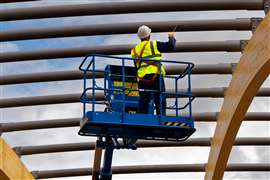 The need for certfied MEWP operators is in high demand across North America. (Photo: IPAF)
The need for certfied MEWP operators is in high demand across North America. (Photo: IPAF)
The message resonated on site. “He saw a guy on the ladder and said, ‘Hey man, why don’t you go get a lift? You can do a whole lot more work in a day.’ I recognised then that the approach really works: focusing strictly on safety as the last resort. Tying it all together is what drives prevention.”
Lyons is candid about international comparisons, arguing that US practice lags peer markets in adopting proven controls. “I will say I think we’re probably 10 or 12 years behind. I’ve probably been to eight or ten countries’ construction sites - some in the Middle East, the UK and Japan. We are a bit behind here in the United States accepting somebody else’s best practices. When you go to the UK, for example, near overhead power lines, long before the power line is like a tennis net that says, ‘Oh, you’re getting too close.’ We don’t do that here. In the States, we just put somebody on the ground and say, ‘Hey, tell Tony when he’s too close to the power lines.’”
Part of his advocacy is simply making those practices visible and repeatable. “There are a lot of best practices in other countries that either we haven’t adopted for many reasons or may not be aware of. I love writing articles on this kind of stuff because a lot of people aren’t aware that there’s a safer way of doing something, because - quote - ‘We’ve always done it this way at this company.’”
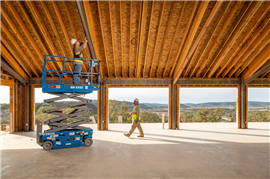 A Genie GS-1932 scissor lift in the Texas First Rentals fleet.
A Genie GS-1932 scissor lift in the Texas First Rentals fleet.
The stakes, he says, are evident in fatality rates. “People truly don’t get killed in the UK the way they do here [in the US]. I think we kill people five or six times more often than they do over there, which is an astounding number. And after all these years, one of the constants I’ve
seen is that if you can make safety part of a workflow that improves productivity, people will follow it. They want to do a good job, and if they see an advantage for themselves or the company, safety becomes a natural by-product.”
Mentoring and capability-building are integral to the model, positioning safety as an enabler rather than an add-on. “If you can instil the idea that safety isn’t a burden, but a tool to make your crew more effective, that’s when real change happens,” he says. “It’s not about rules and fear; it’s about designing systems where people are protected by default, and work gets done better because of it.”
For Lyons, innovation means eliminating unnecessary work at height, preferring MEWPs to ladders, and improving hazard recognition. The goal is cultural as much as technical: a site where protection is designed in and efficiency follows. “The safest place to work is on the ground,” he repeats, underscoring the principle that has shaped his work, his advocacy, and his reputation as one of the most influential voices in US construction safety.
STAY CONNECTED


Receive the information you need when you need it through our world-leading magazines, newsletters and daily briefings.
CONNECT WITH THE TEAM










